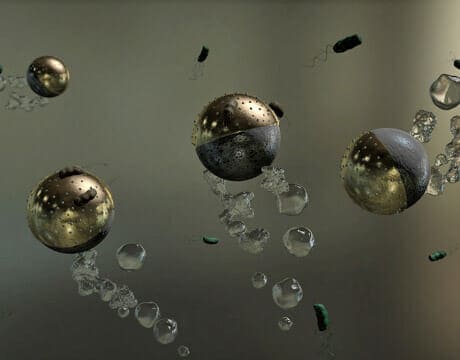Swimming microbots purify water by capturing and killing bacteria, before being removed with magnets. Image: American Chemical Society
One of the most serious health risks for people around the world is inadequate access to clean water. Waterborne diseases have devastating impacts on public health—for example, E. coli bacteria cause an estimated 265,000 infections each year in the U.S. Current disinfection methods depend largely on chemicals and disinfectants. However, some pathogens cannot be killed using conventional disinfectants and require a combination of methods, or higher disinfectant doses, which can leave harmful byproducts in the water.
As a result, a pressing need exists for more effective water-cleaning technologies that are also safe for the environment and human health. Intrigued by the use of catalytic, self-propelled micromotors as an environmental tool for capturing heavy metals and other pollutants, Diana Vilela and Samuel Sánchez, scientists at Max-Planck Institute for Intelligent Systems in Stuttgart, Germany, and the Institute for Bioengineering of Catalonia in Barcelona, Spain, explored a similar concept for removing waterborne bacteria. With the help of several other collaborators, they developed self-propelled microrobots that are highly effective in removing E. coli bacteria from contaminated water. They presented their results in June 2017 paper […]
Full article: Swimming Microbots Kill Waterborne Pathogens

